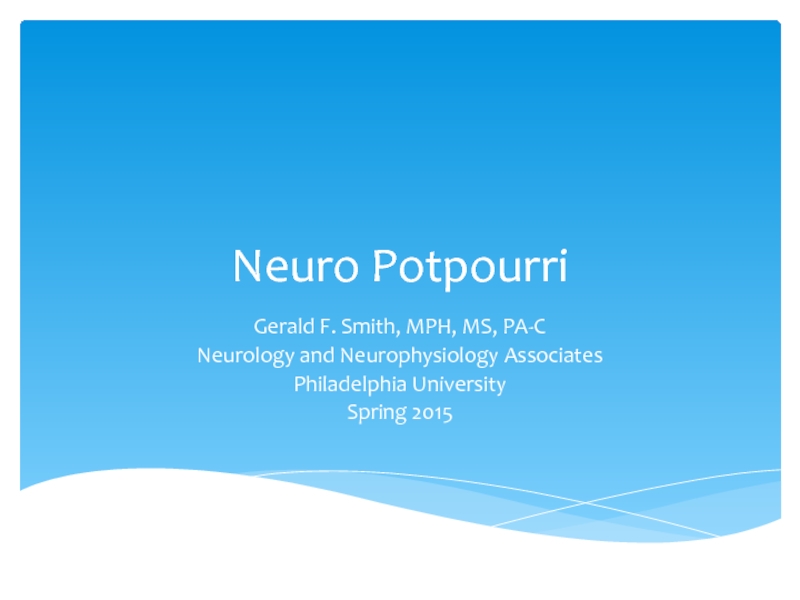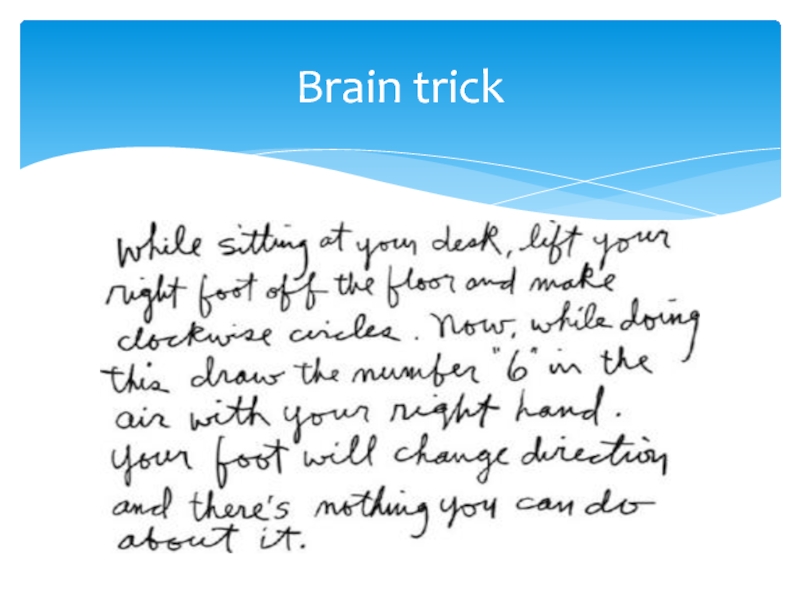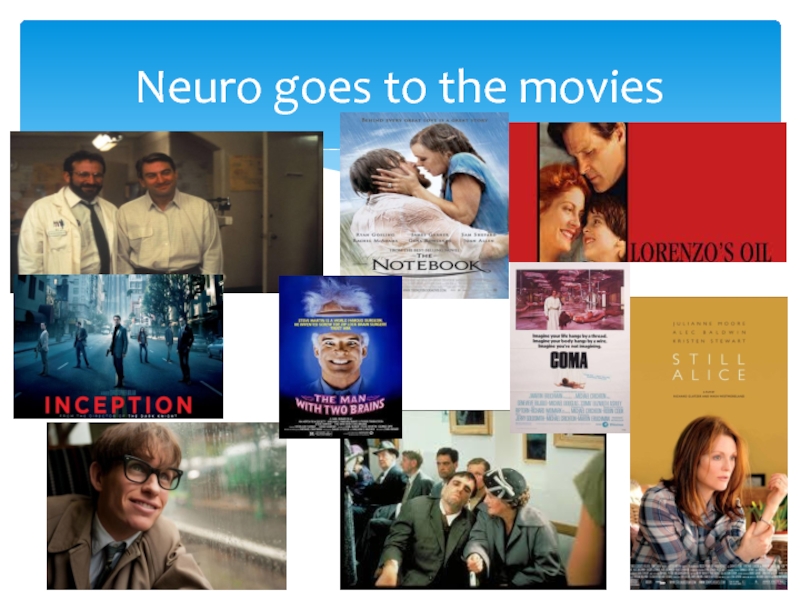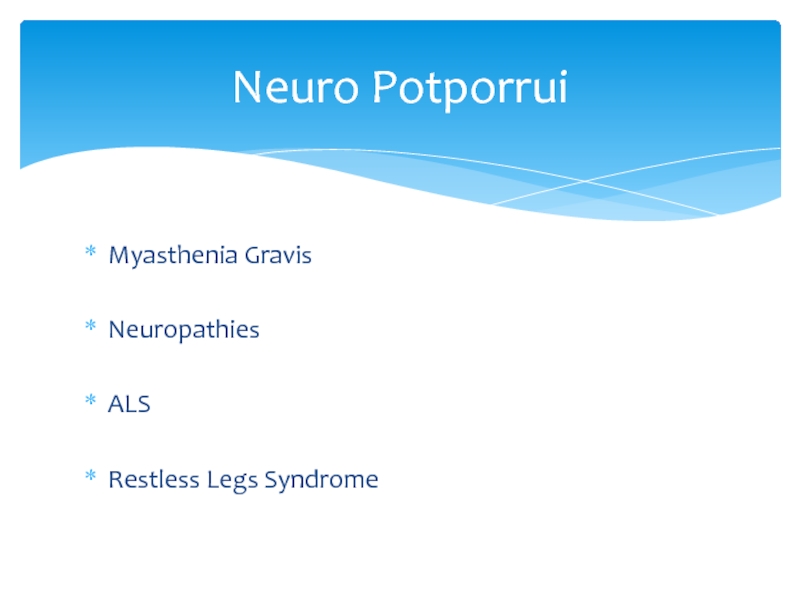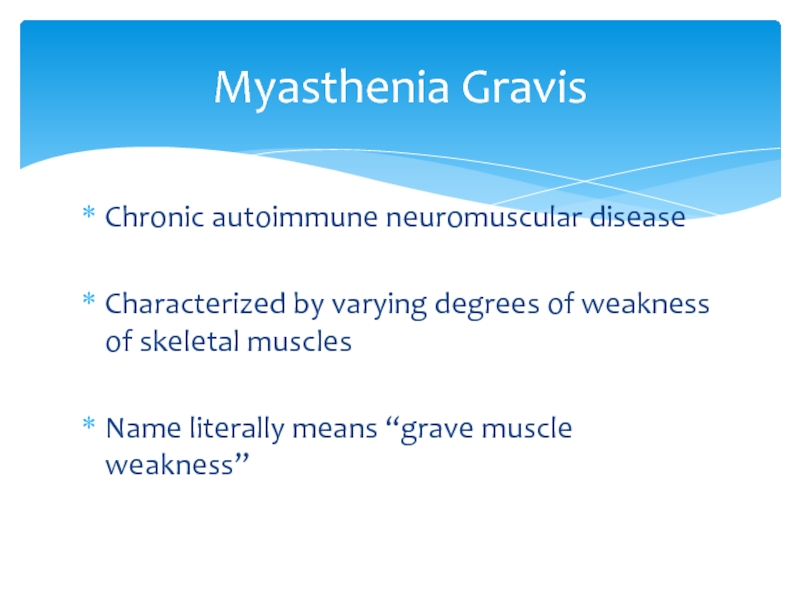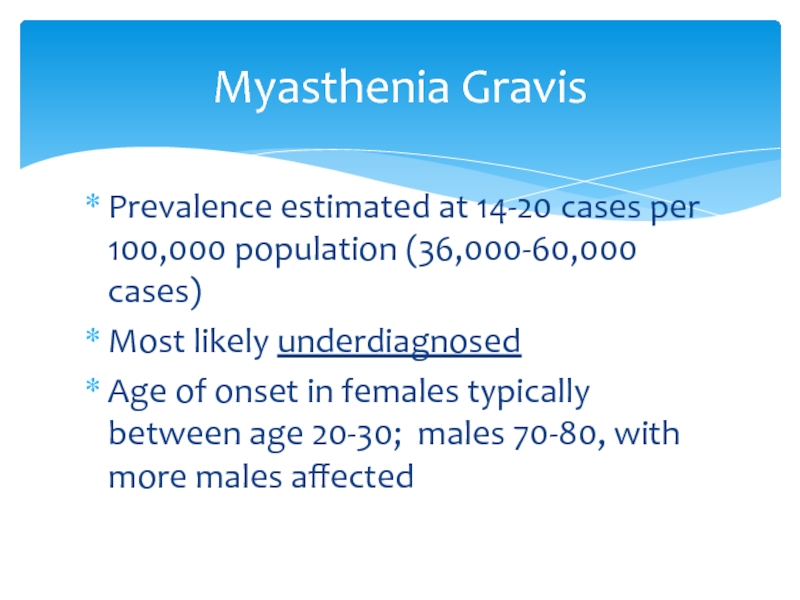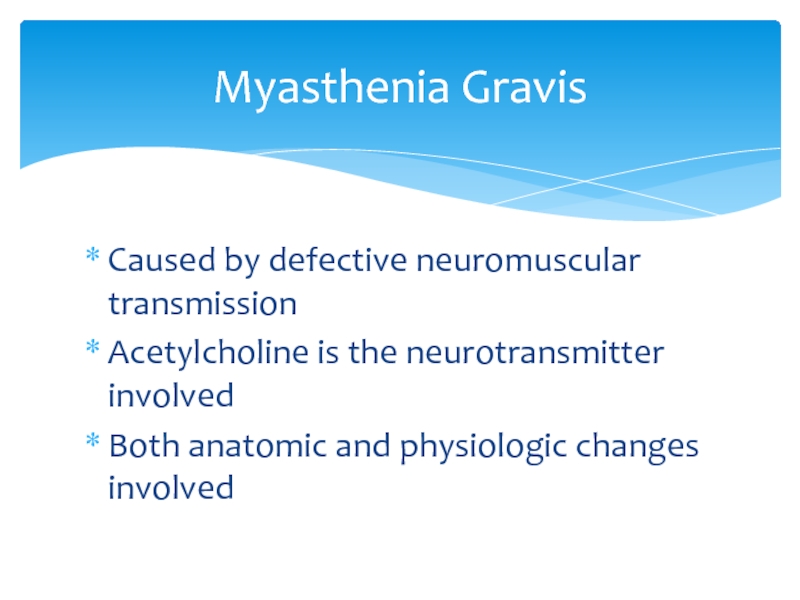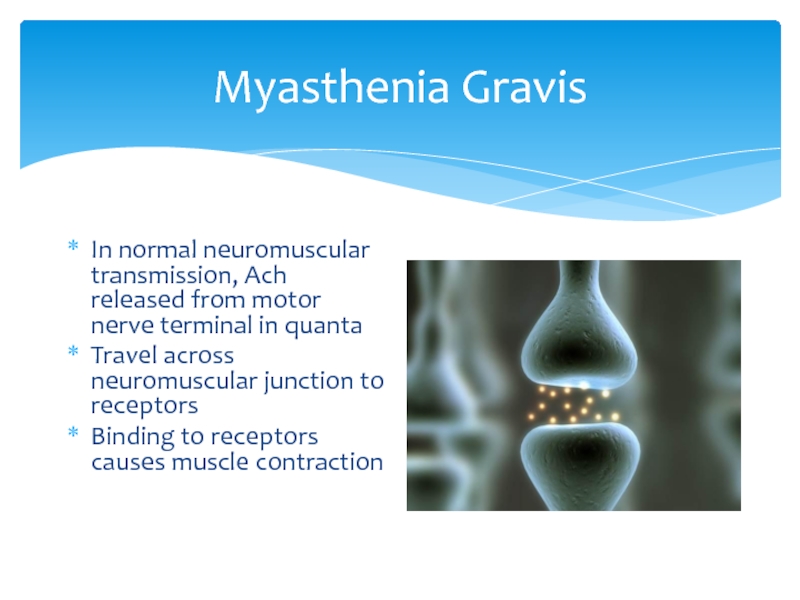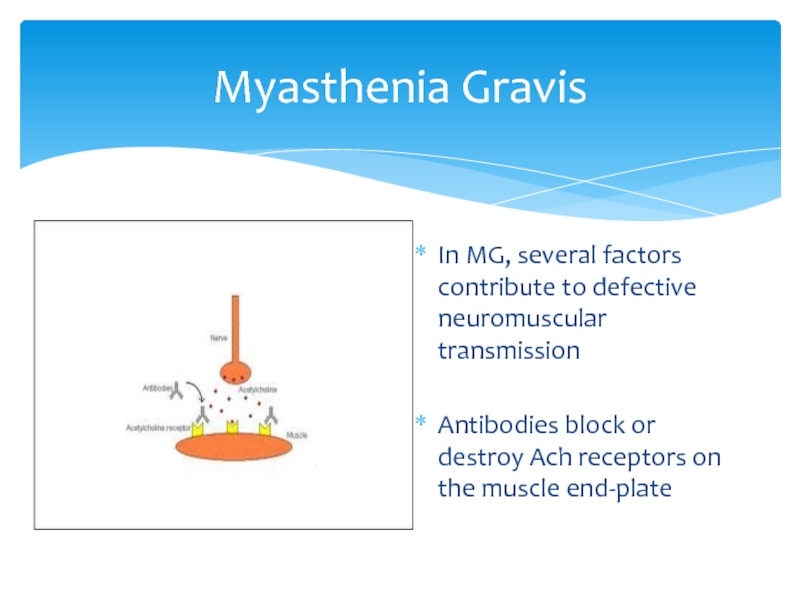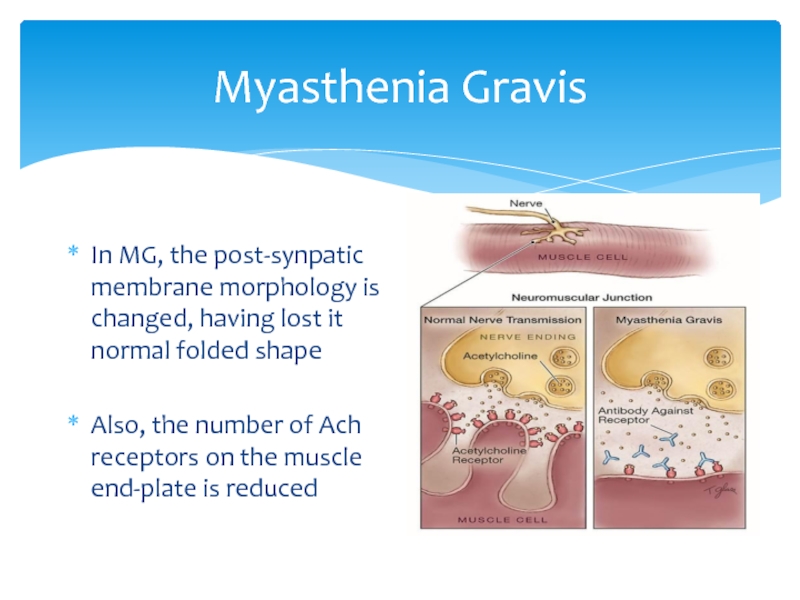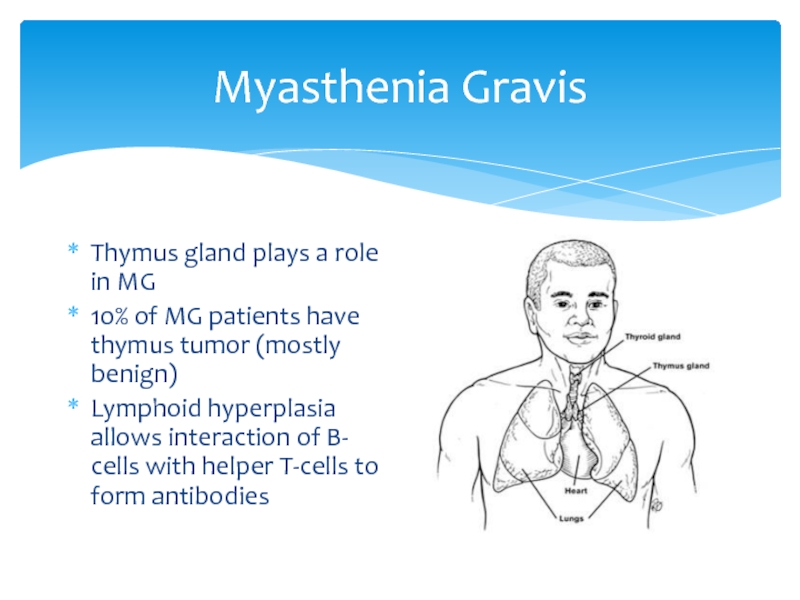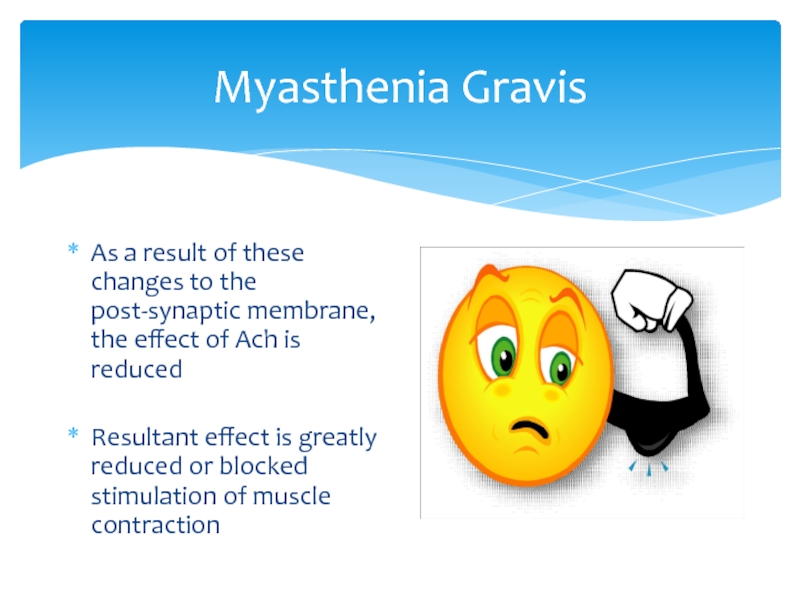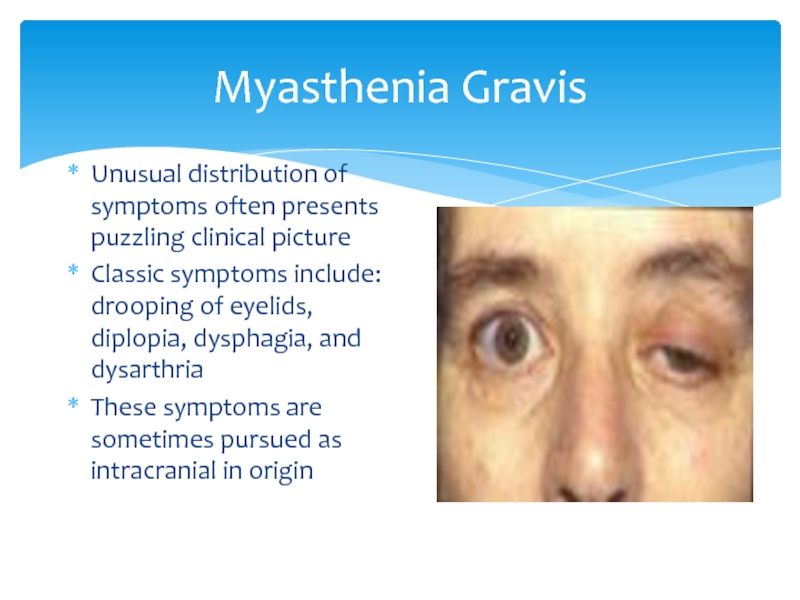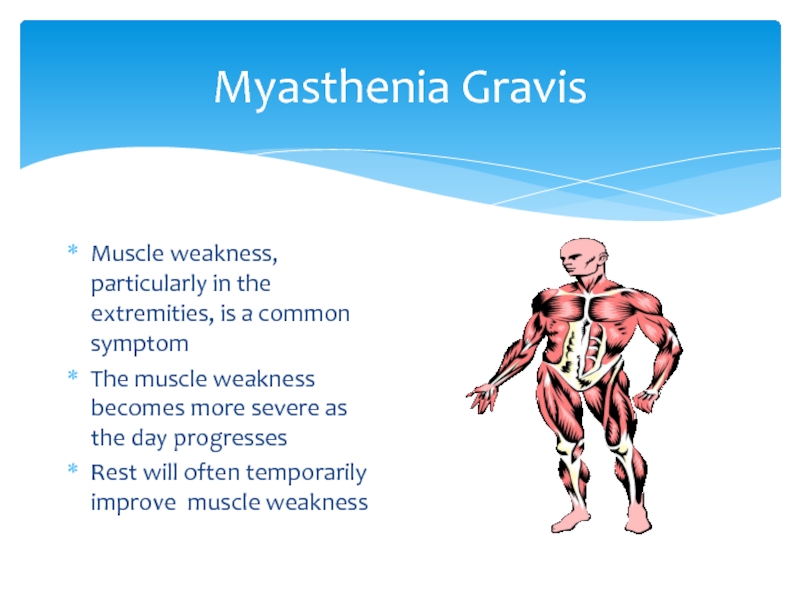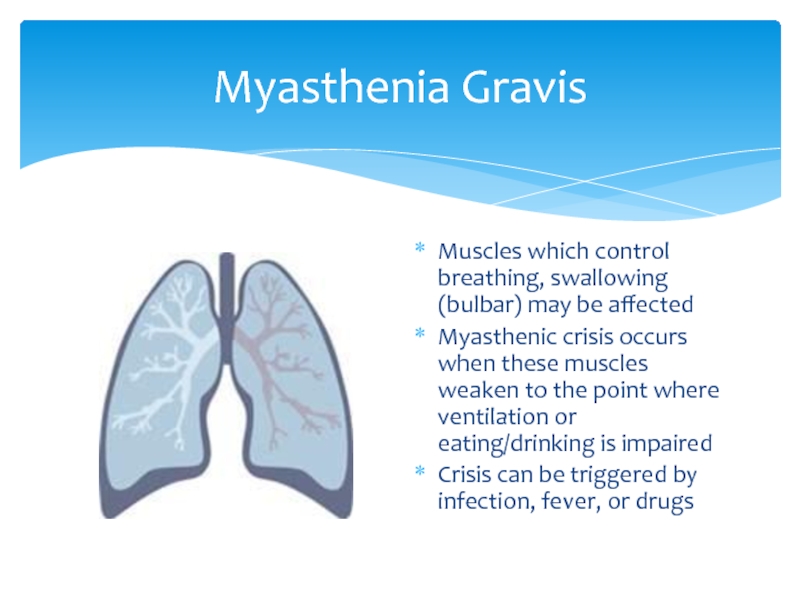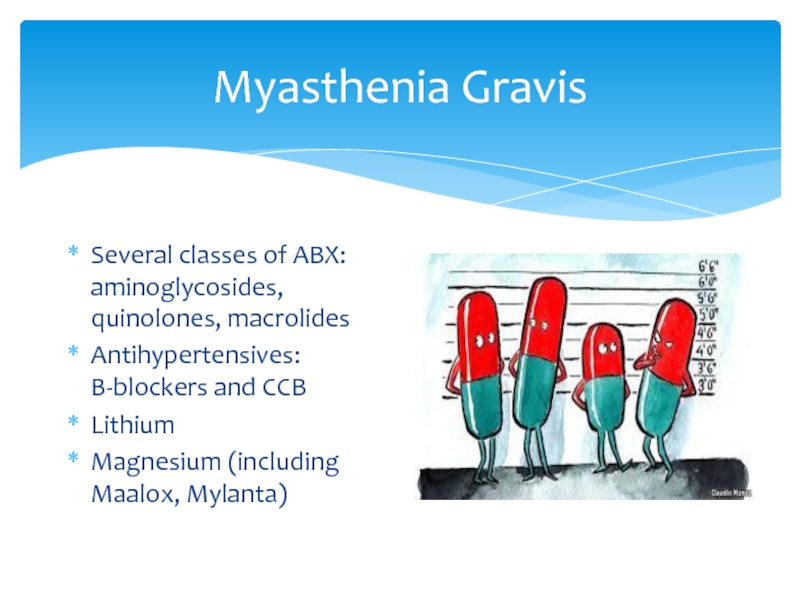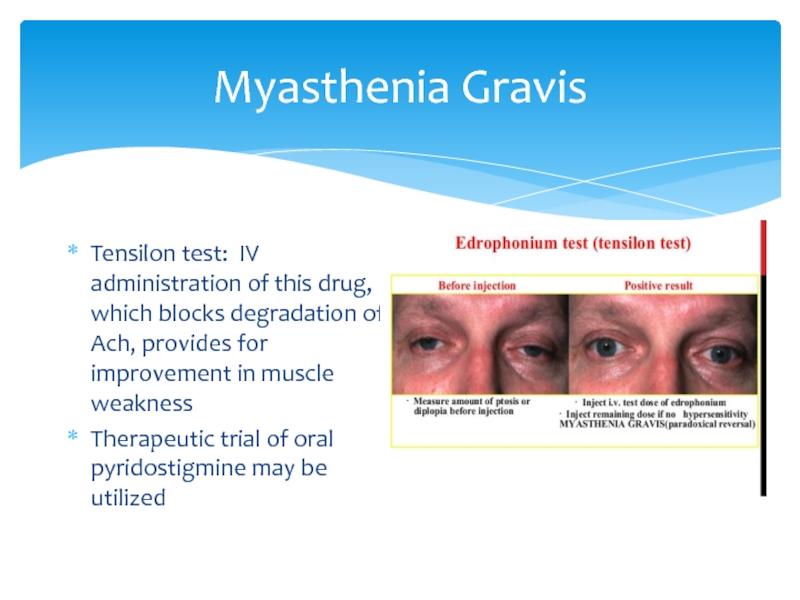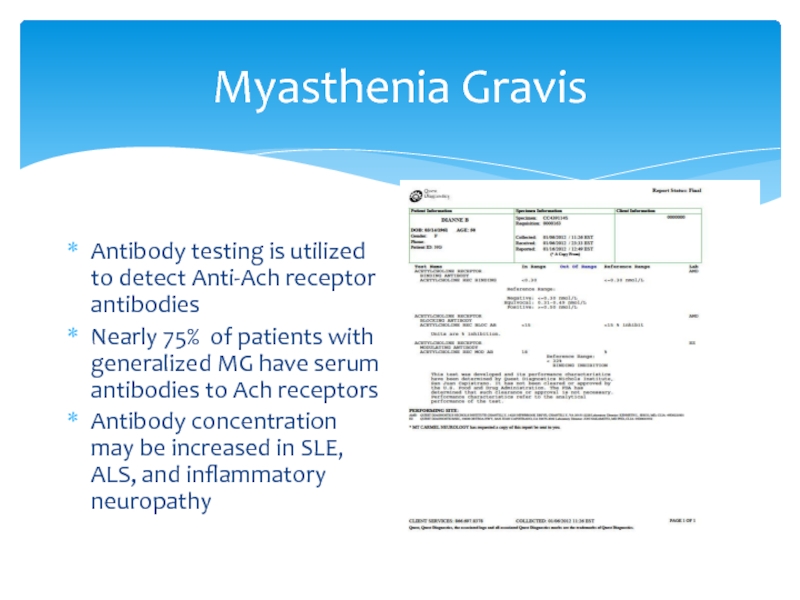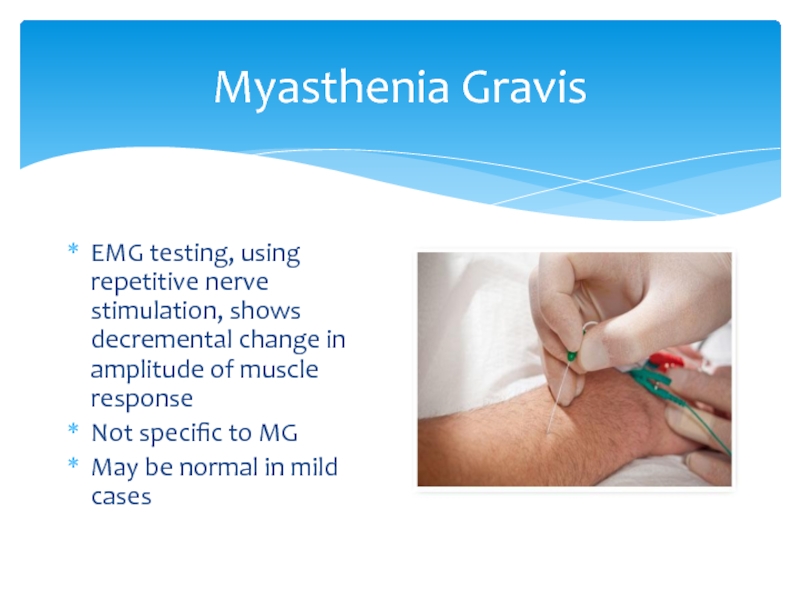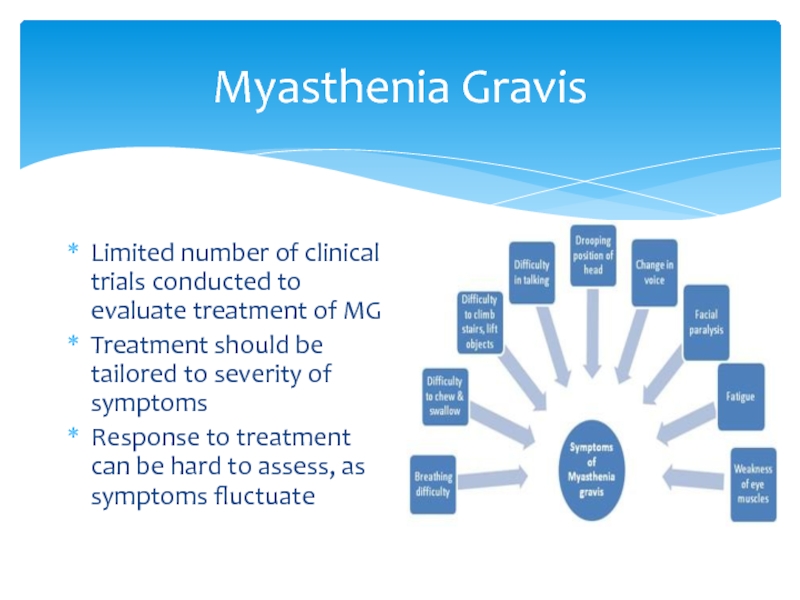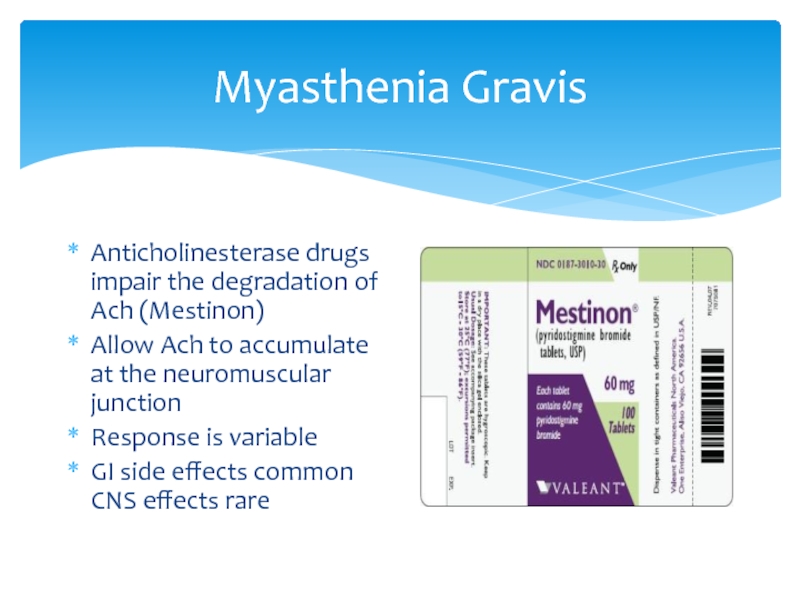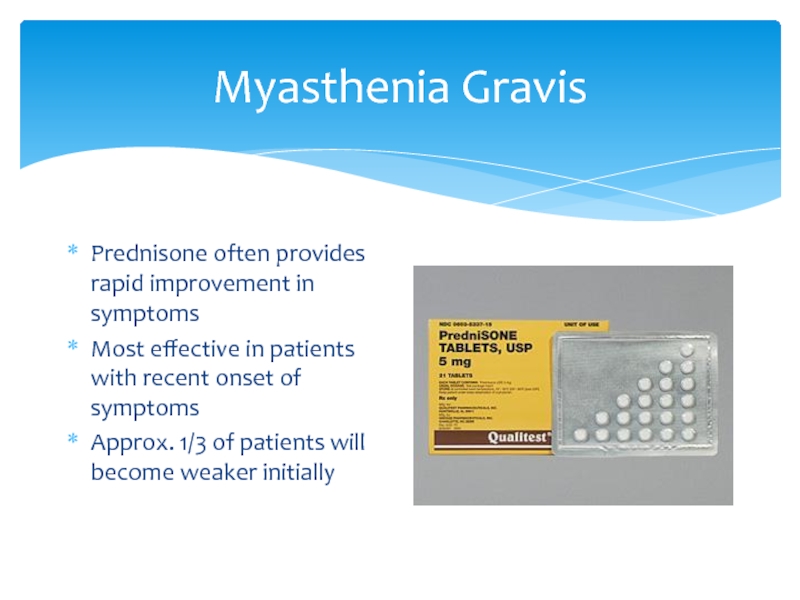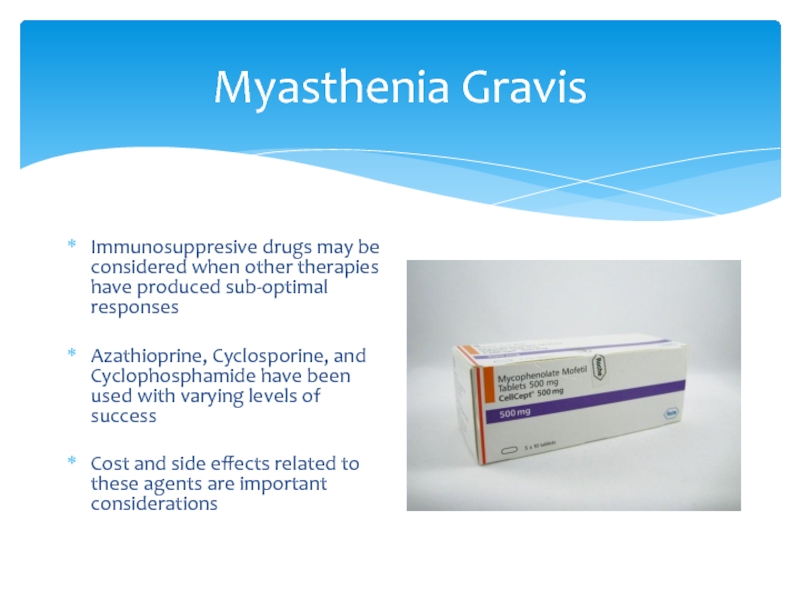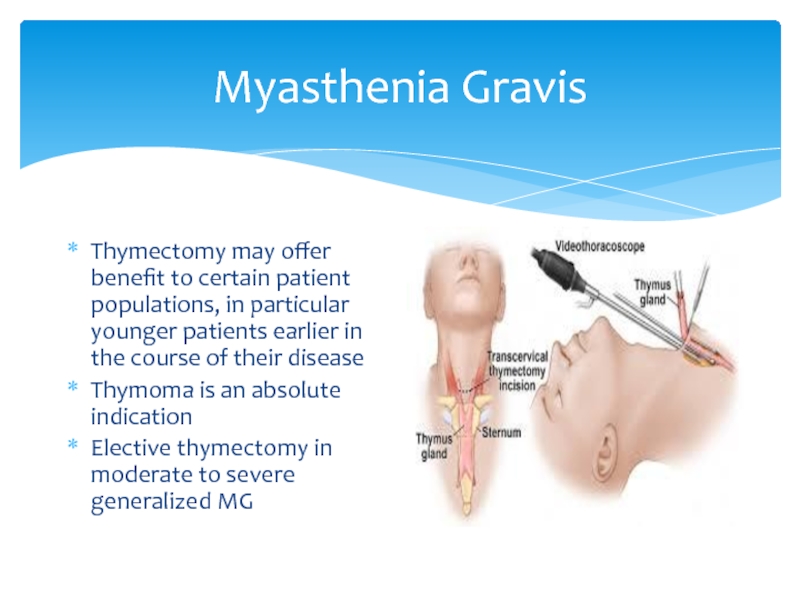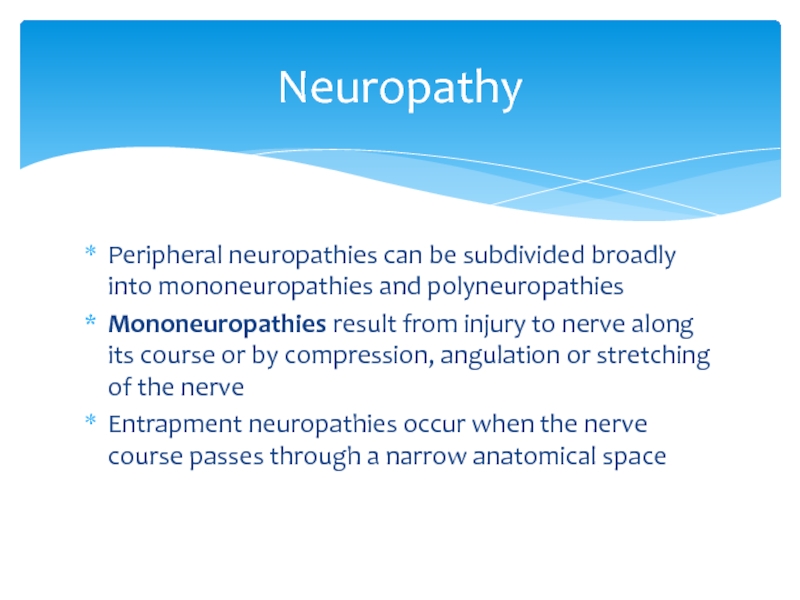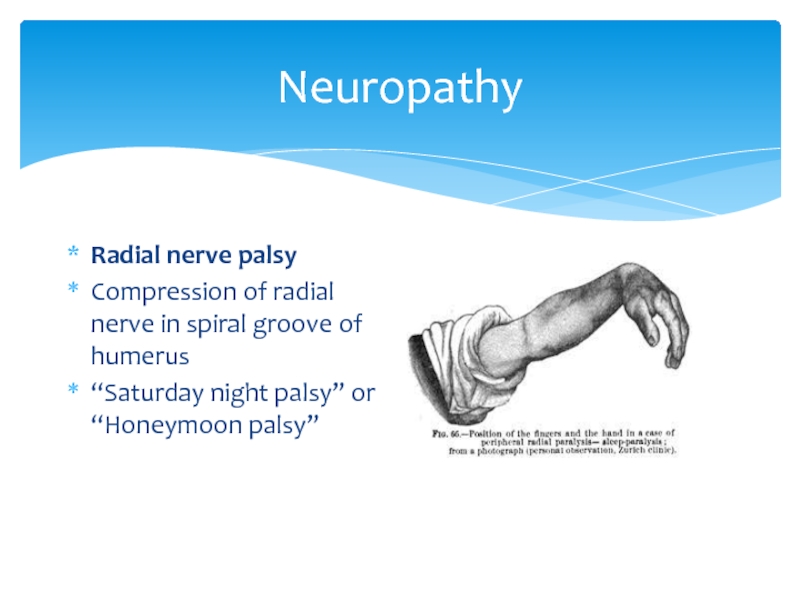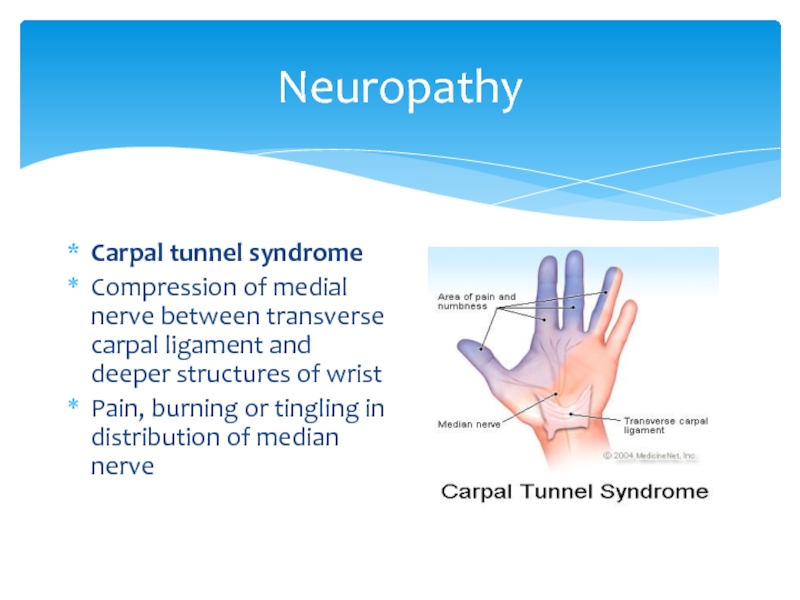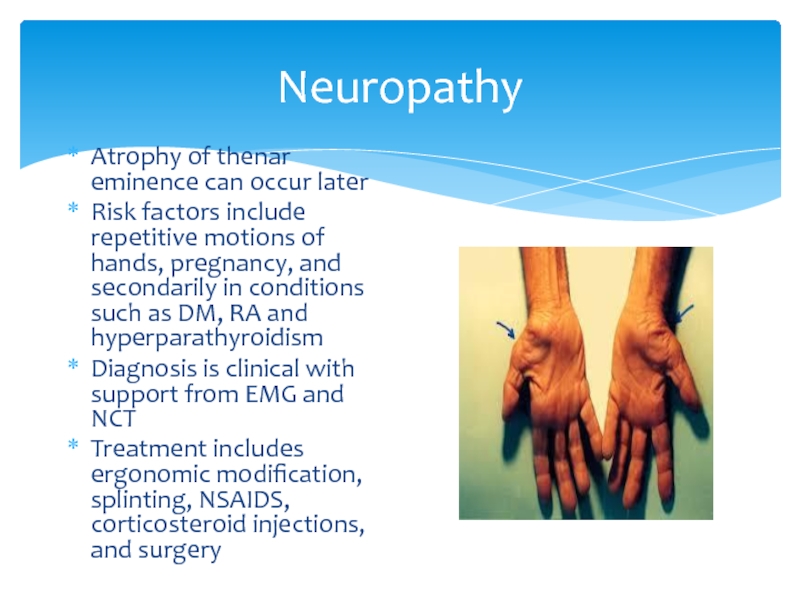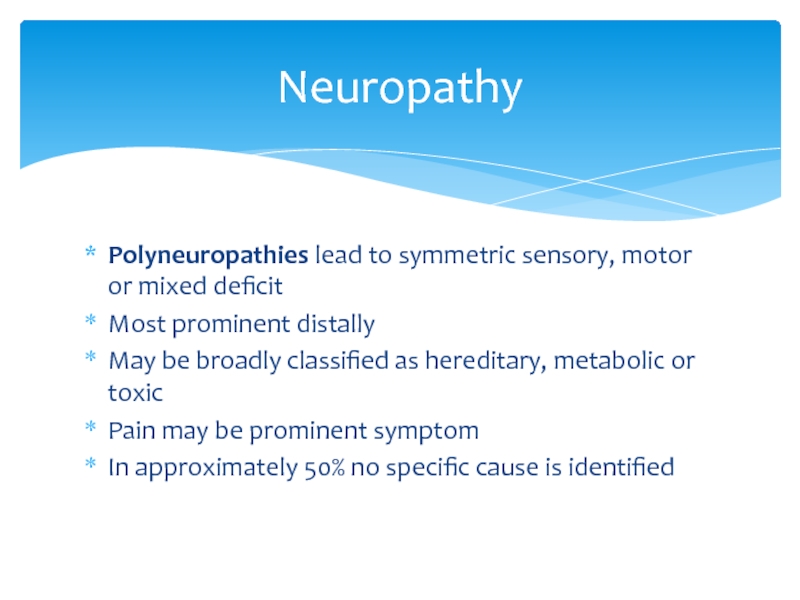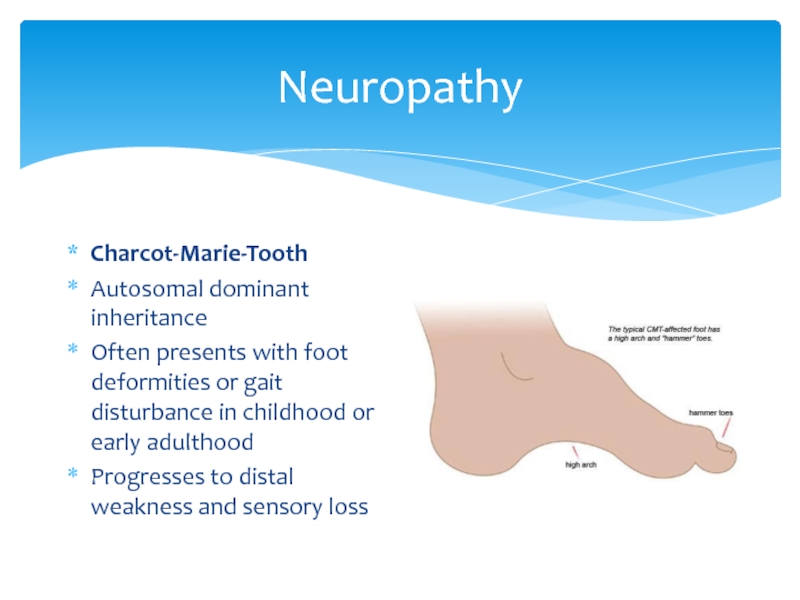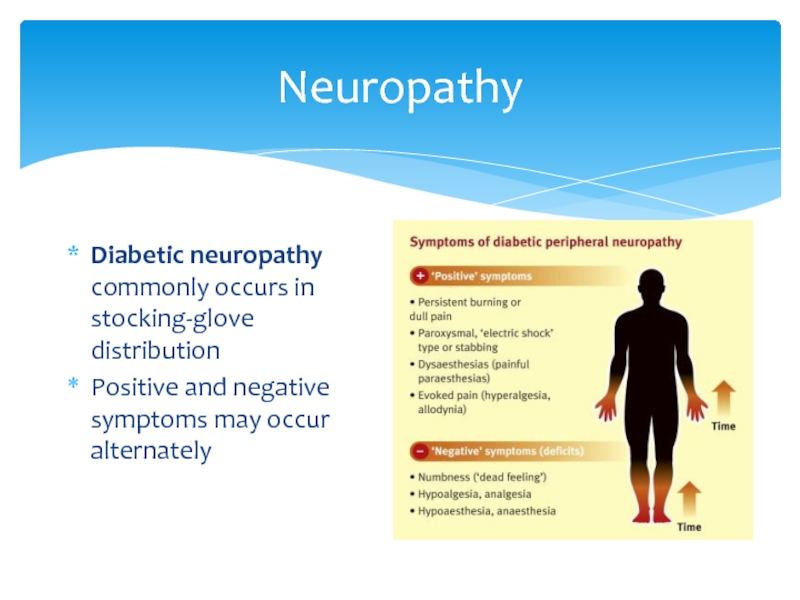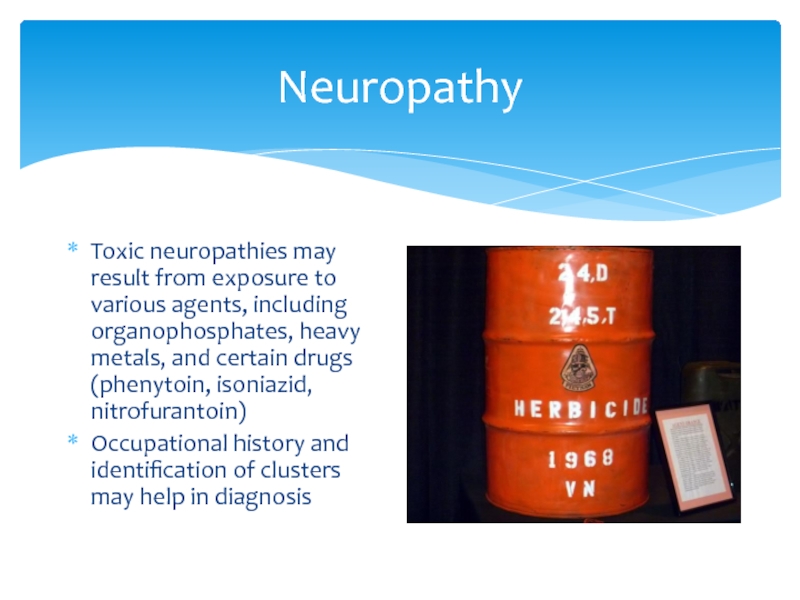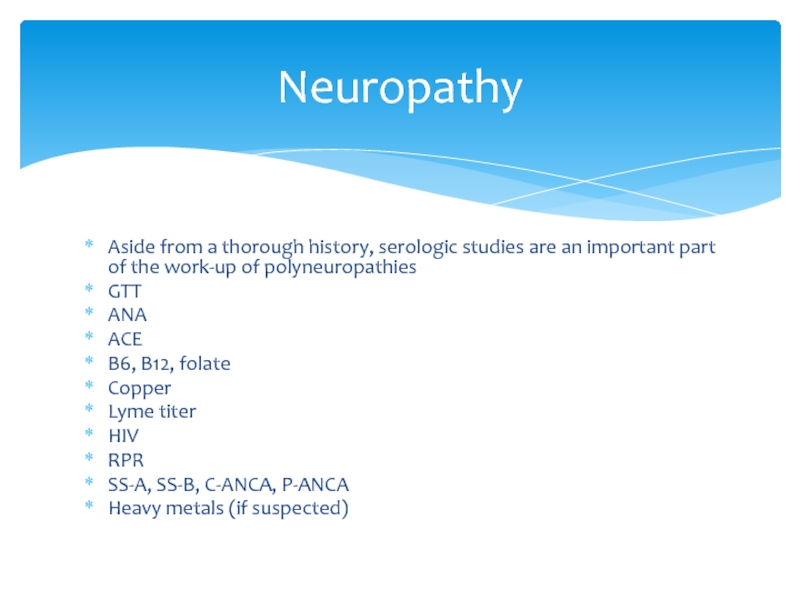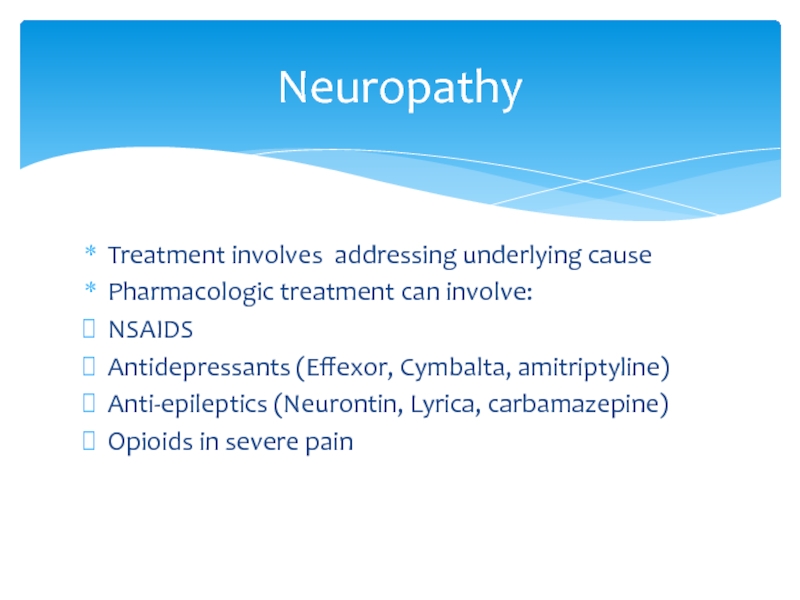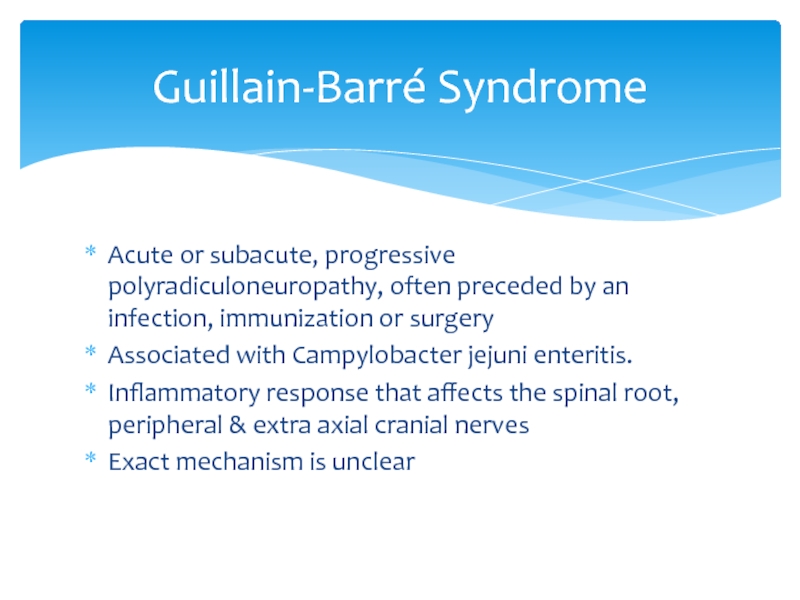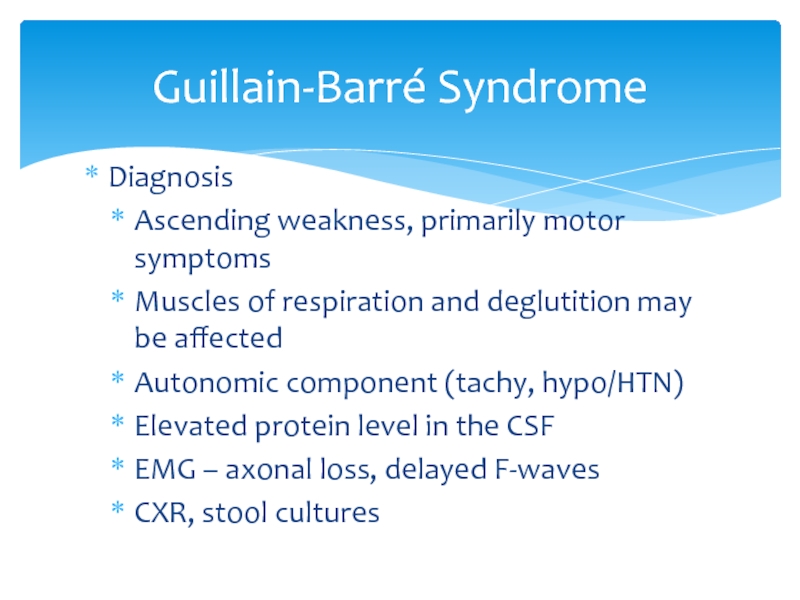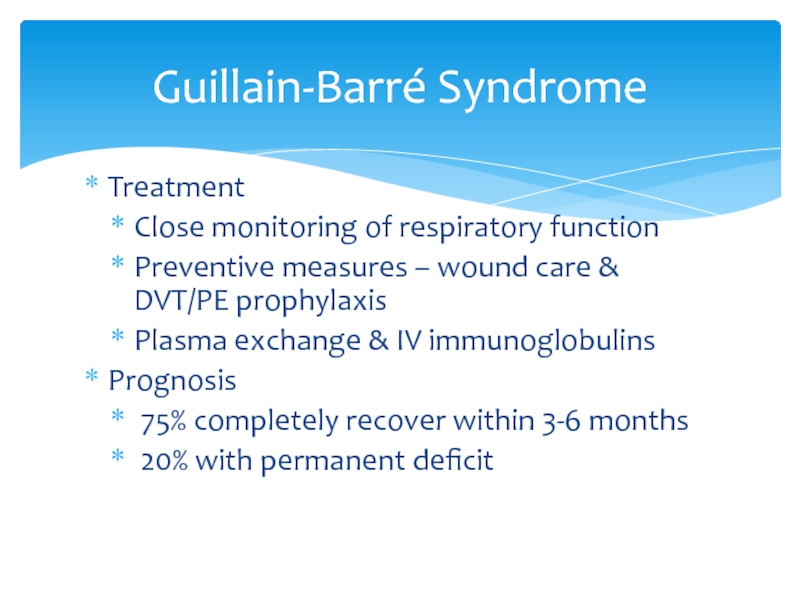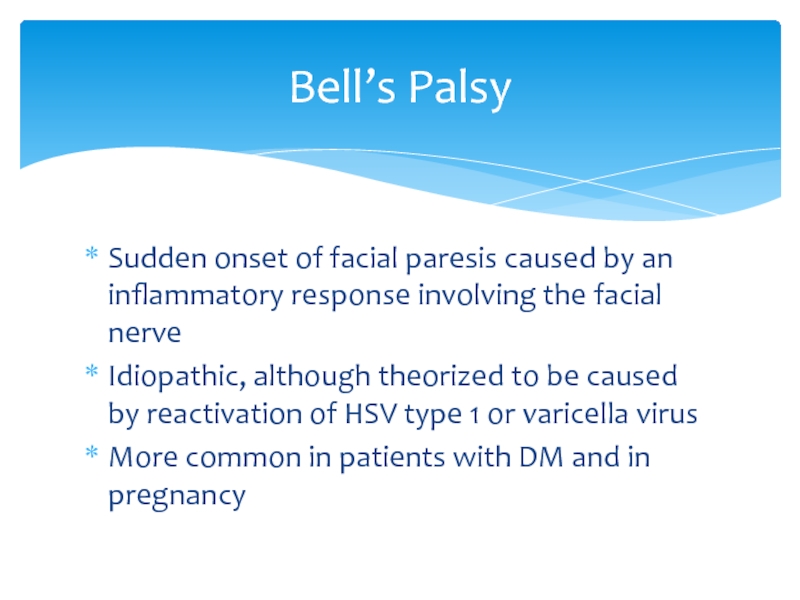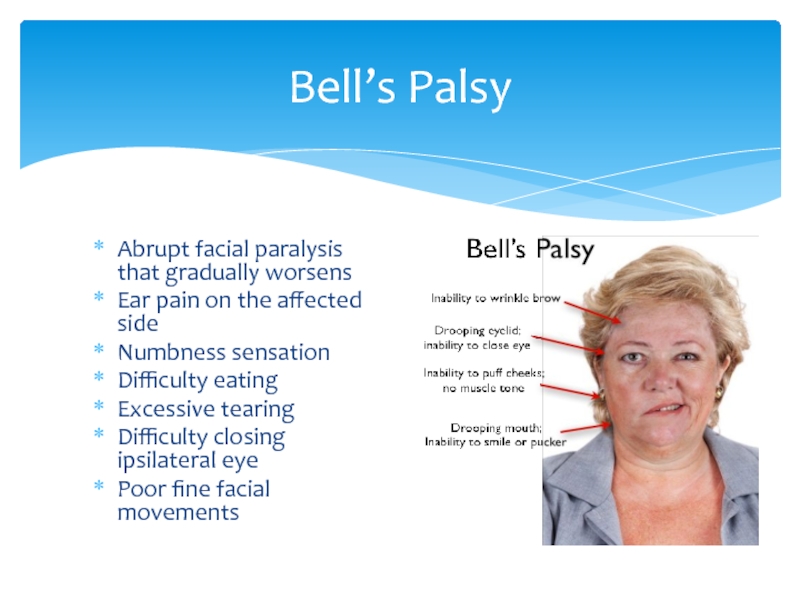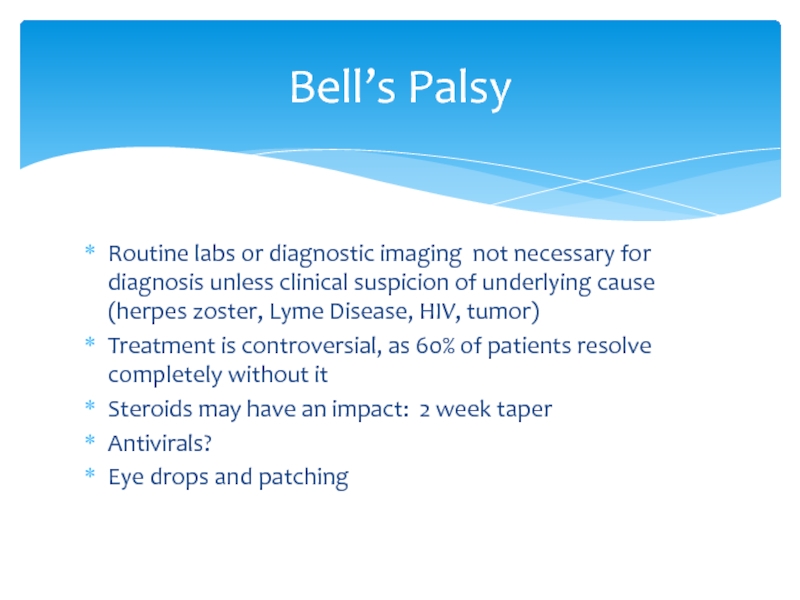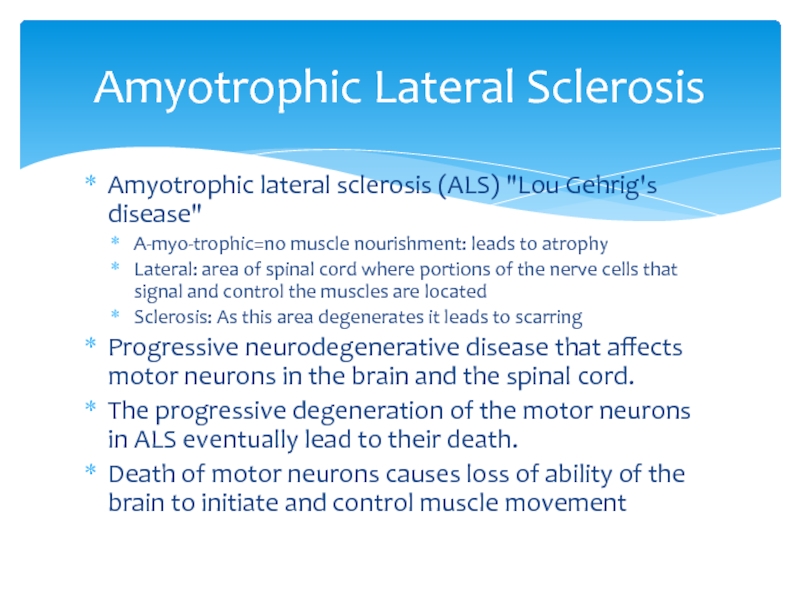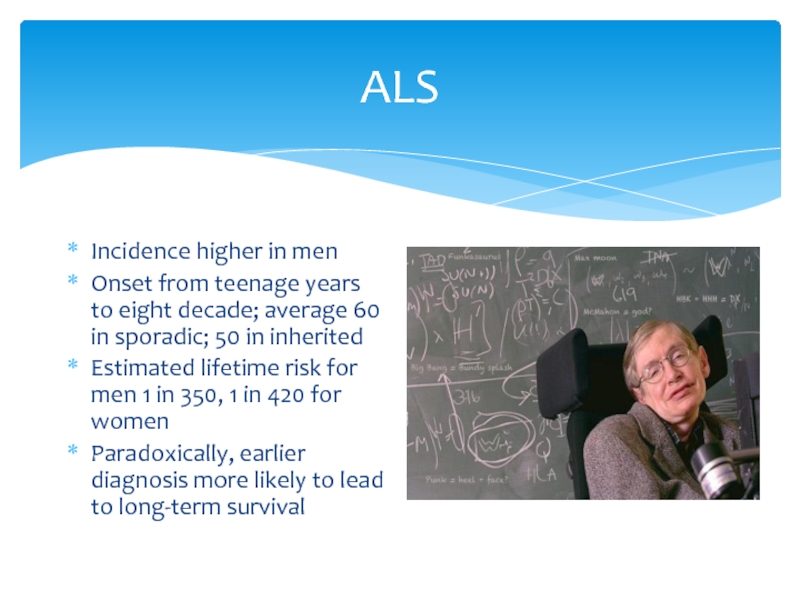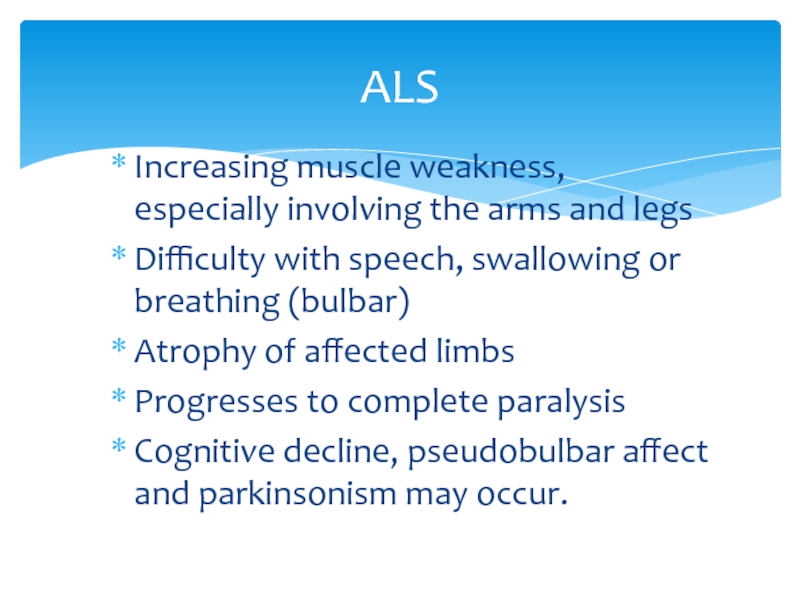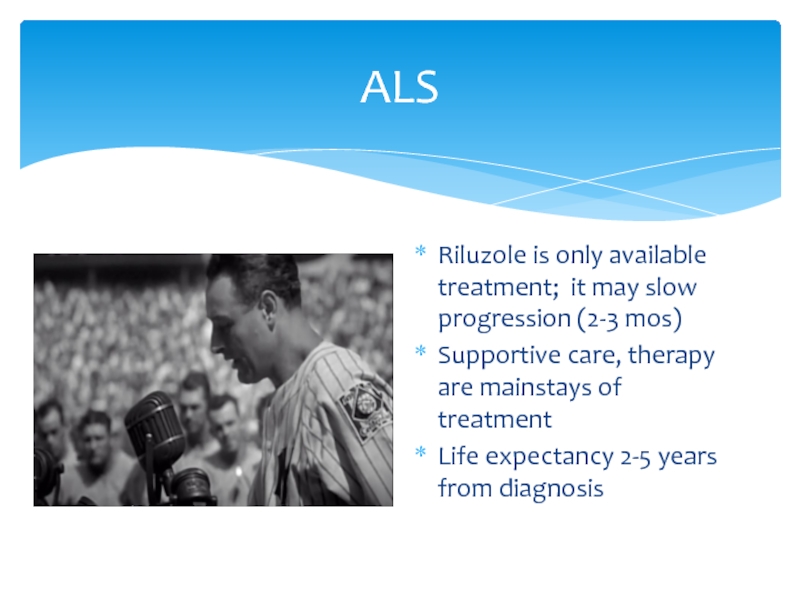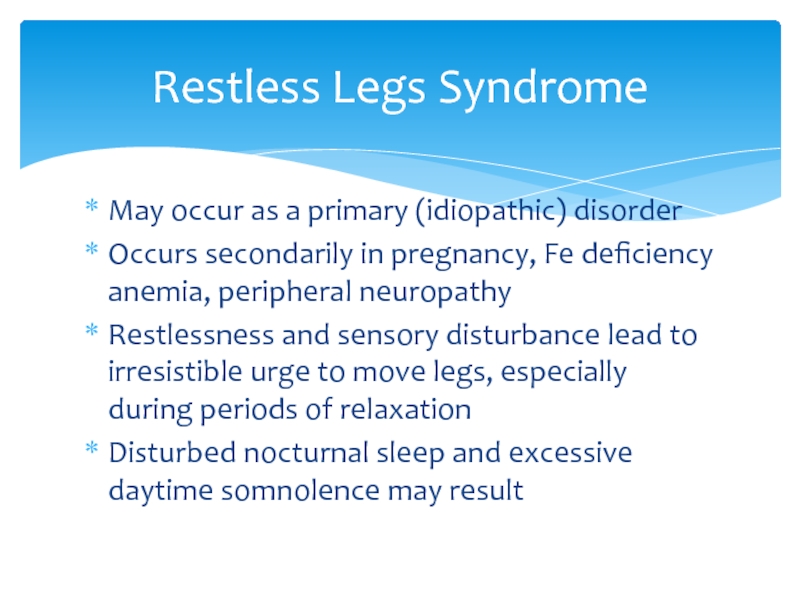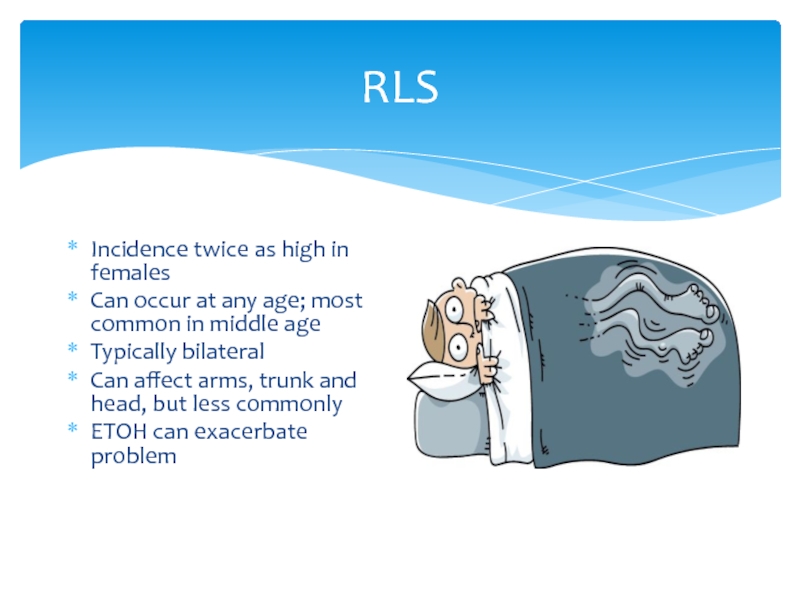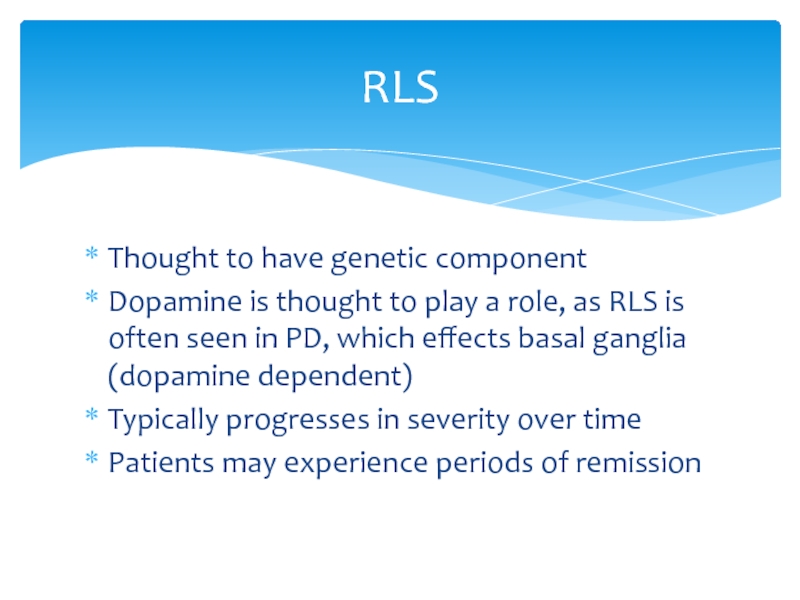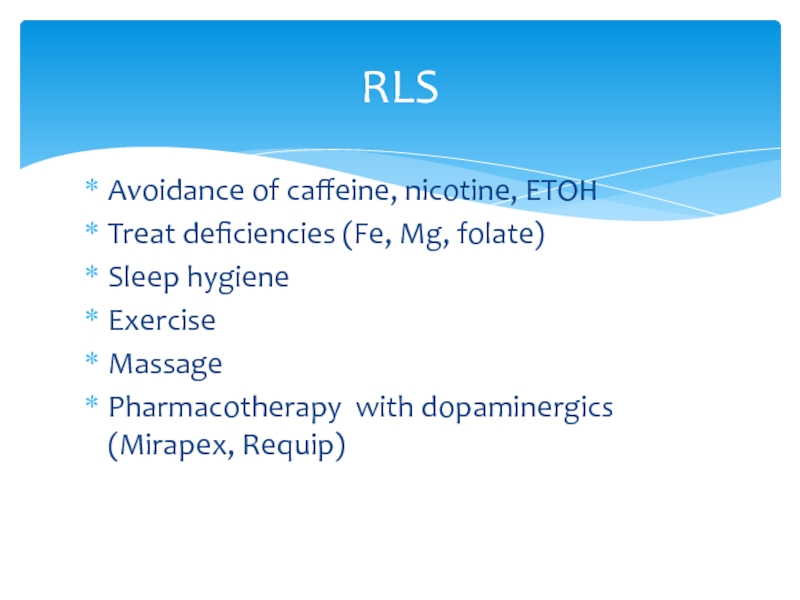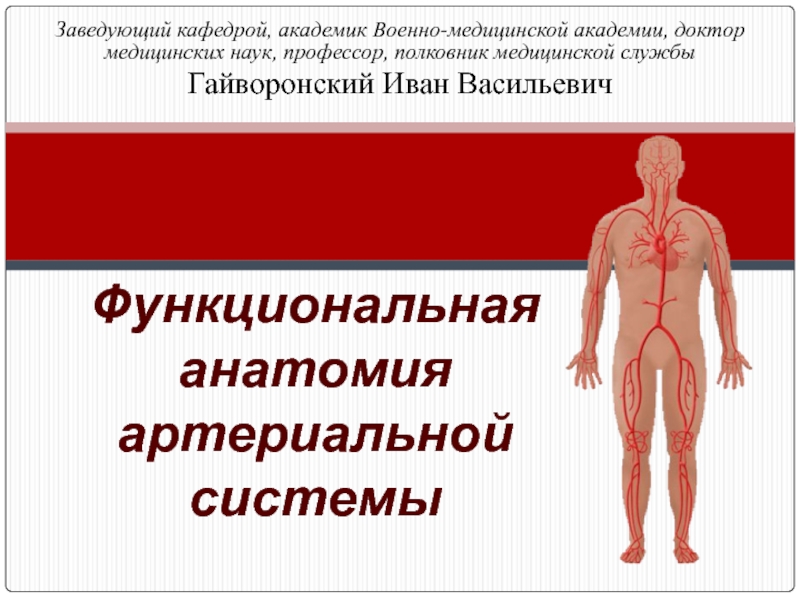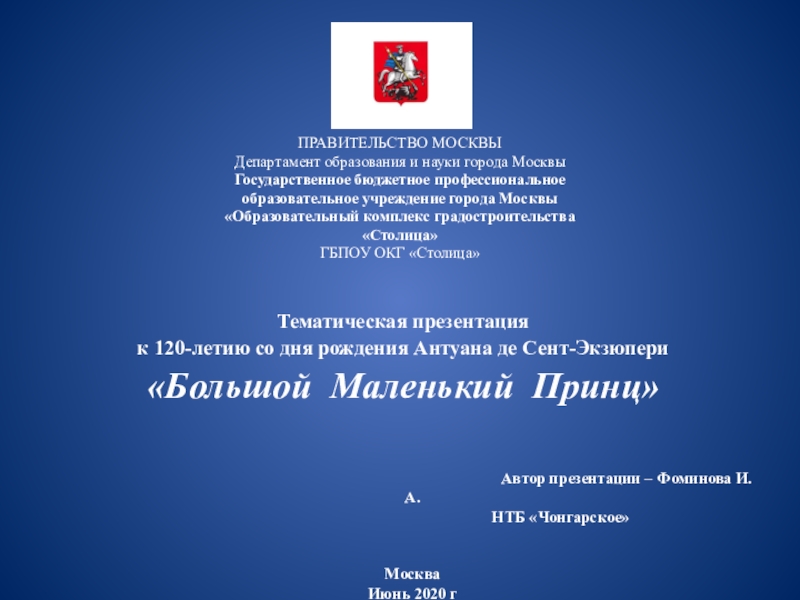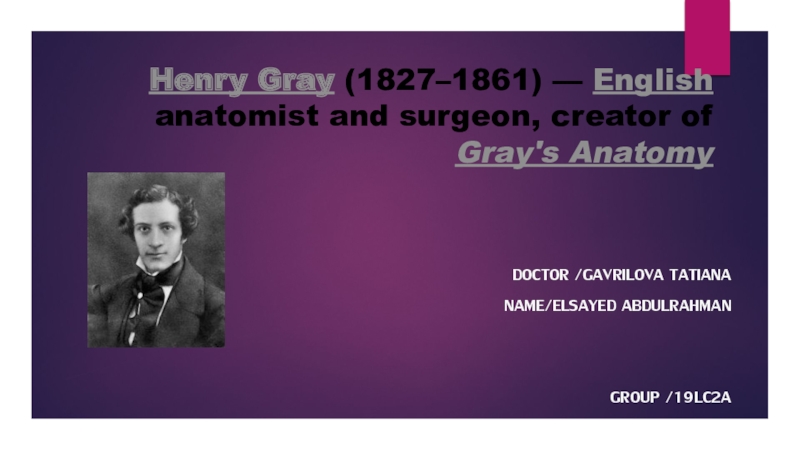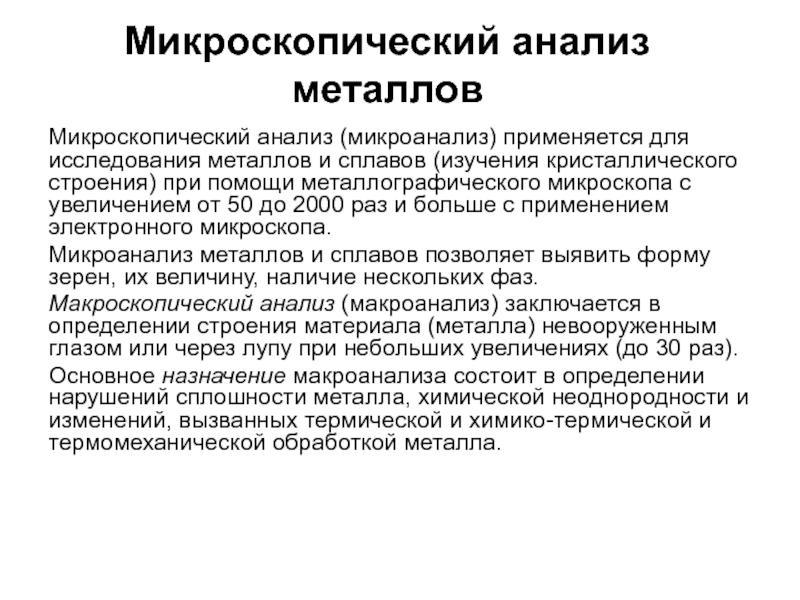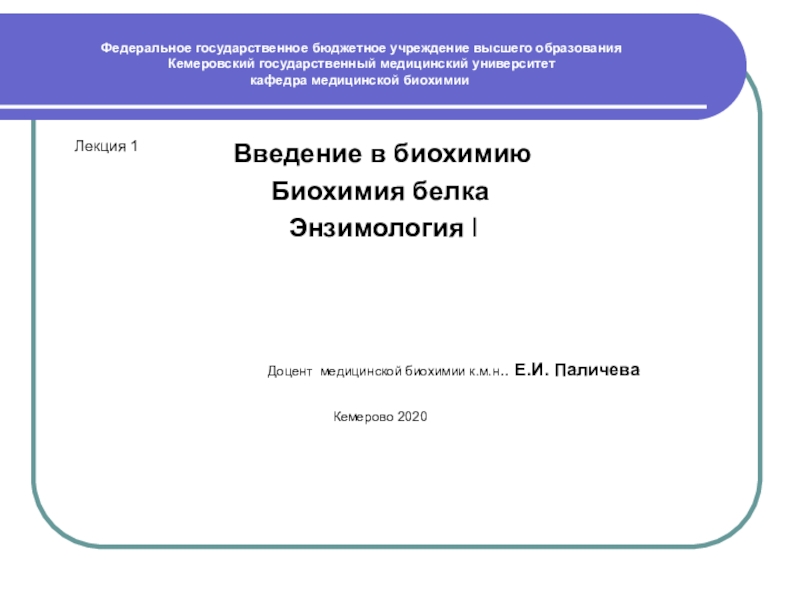Разделы презентаций
- Разное
- Английский язык
- Астрономия
- Алгебра
- Биология
- География
- Геометрия
- Детские презентации
- Информатика
- История
- Литература
- Математика
- Медицина
- Менеджмент
- Музыка
- МХК
- Немецкий язык
- ОБЖ
- Обществознание
- Окружающий мир
- Педагогика
- Русский язык
- Технология
- Физика
- Философия
- Химия
- Шаблоны, картинки для презентаций
- Экология
- Экономика
- Юриспруденция
Neuro Potpourri
Содержание
- 1. Neuro Potpourri
- 2. Brain trick
- 3. Neuro goes to the movies
- 4. Myasthenia GravisNeuropathiesALSRestless Legs SyndromeNeuro Potporrui
- 5. Chronic autoimmune neuromuscular disease Characterized by varying
- 6. Prevalence estimated at 14-20 cases per 100,000
- 7. Caused by defective neuromuscular transmissionAcetylcholine is the neurotransmitter involvedBoth anatomic and physiologic changes involvedMyasthenia Gravis
- 8. Myasthenia GravisIn normal neuromuscular transmission, Ach released
- 9. Myasthenia GravisIn MG, several factors contribute to
- 10. Myasthenia GravisIn MG, the post-synpatic membrane morphology
- 11. Myasthenia GravisThymus gland plays a role in
- 12. Myasthenia GravisAs a result of these changes
- 13. Myasthenia GravisUnusual distribution of symptoms often presents
- 14. Myasthenia GravisMuscle weakness, particularly in the extremities,
- 15. Myasthenia GravisMuscles which control breathing, swallowing (bulbar)
- 16. Myasthenia GravisSeveral classes of ABX: aminoglycosides, quinolones, macrolidesAntihypertensives: B-blockers and CCBLithiumMagnesium (including Maalox, Mylanta)
- 17. Myasthenia GravisTensilon test: IV administration of this
- 18. Myasthenia GravisAntibody testing is utilized to detect
- 19. Myasthenia GravisEMG testing, using repetitive nerve stimulation,
- 20. Myasthenia GravisLimited number of clinical trials conducted
- 21. Myasthenia GravisAnticholinesterase drugs impair the degradation of
- 22. Myasthenia GravisPrednisone often provides rapid improvement in
- 23. Myasthenia GravisImmunosuppresive drugs may be considered when
- 24. Myasthenia GravisThymectomy may offer benefit to certain
- 25. Peripheral neuropathies can be subdivided broadly into
- 26. NeuropathyRadial nerve palsyCompression of radial nerve in spiral groove of humerus“Saturday night palsy” or “Honeymoon palsy”
- 27. NeuropathyCarpal tunnel syndromeCompression of medial nerve between
- 28. NeuropathyAtrophy of thenar eminence can occur laterRisk
- 29. Polyneuropathies lead to symmetric sensory, motor or
- 30. NeuropathyCharcot-Marie-ToothAutosomal dominant inheritanceOften presents with foot deformities
- 31. NeuropathyDiabetic neuropathy commonly occurs in stocking-glove distributionPositive and negative symptoms may occur alternately
- 32. NeuropathyToxic neuropathies may result from exposure to
- 33. Aside from a thorough history, serologic studies
- 34. Treatment involves addressing underlying causePharmacologic treatment can
- 35. Acute or subacute, progressive polyradiculoneuropathy, often preceded
- 36. DiagnosisAscending weakness, primarily motor symptomsMuscles of respiration
- 37. TreatmentClose monitoring of respiratory functionPreventive measures –
- 38. Sudden onset of facial paresis caused by
- 39. Bell’s PalsyAbrupt facial paralysis that gradually worsensEar
- 40. Routine labs or diagnostic imaging not necessary
- 41. Amyotrophic lateral sclerosis (ALS) "Lou Gehrig's disease"A-myo-trophic=no
- 42. ALSIncidence higher in menOnset from teenage years
- 43. Increasing muscle weakness, especially involving the arms
- 44. ALSRiluzole is only available treatment; it may
- 45. May occur as a primary (idiopathic) disorderOccurs
- 46. RLSIncidence twice as high in femalesCan occur
- 47. Thought to have genetic componentDopamine is thought
- 48. Avoidance of caffeine, nicotine, ETOHTreat deficiencies (Fe, Mg, folate)Sleep hygieneExerciseMassagePharmacotherapy with dopaminergics (Mirapex, Requip)RLS
- 49. Скачать презентанцию
Слайды и текст этой презентации
Слайд 1Neuro Potpourri
Gerald F. Smith, MPH, MS, PA-C
Neurology and Neurophysiology Associates
Philadelphia
University
Слайд 5Chronic autoimmune neuromuscular disease
Characterized by varying degrees of weakness
of skeletal muscles
Name literally means “grave muscle weakness”
Myasthenia Gravis
Слайд 6Prevalence estimated at 14-20 cases per 100,000 population (36,000-60,000 cases)
Most
likely underdiagnosed
Age of onset in females typically between age 20-30;
males 70-80, with more males affectedMyasthenia Gravis
Слайд 7Caused by defective neuromuscular transmission
Acetylcholine is the neurotransmitter involved
Both anatomic
and physiologic changes involved
Myasthenia Gravis
Слайд 8Myasthenia Gravis
In normal neuromuscular transmission, Ach released from motor nerve
terminal in quanta
Travel across neuromuscular junction to receptors
Binding to receptors
causes muscle contractionСлайд 9Myasthenia Gravis
In MG, several factors contribute to defective neuromuscular transmission
Antibodies
block or destroy Ach receptors on the muscle end-plate
Слайд 10Myasthenia Gravis
In MG, the post-synpatic membrane morphology is changed, having
lost it normal folded shape
Also, the number of Ach receptors
on the muscle end-plate is reducedСлайд 11Myasthenia Gravis
Thymus gland plays a role in MG
10% of MG
patients have thymus tumor (mostly benign)
Lymphoid hyperplasia allows interaction of
B- cells with helper T-cells to form antibodiesСлайд 12Myasthenia Gravis
As a result of these changes to the post-synaptic
membrane, the effect of Ach is reduced
Resultant effect is greatly
reduced or blocked stimulation of muscle contractionСлайд 13Myasthenia Gravis
Unusual distribution of symptoms often presents puzzling clinical picture
Classic
symptoms include: drooping of eyelids, diplopia, dysphagia, and dysarthria
These symptoms
are sometimes pursued as intracranial in originСлайд 14Myasthenia Gravis
Muscle weakness, particularly in the extremities, is a common
symptom
The muscle weakness becomes more severe as the day progresses
Rest
will often temporarily improve muscle weaknessСлайд 15Myasthenia Gravis
Muscles which control breathing, swallowing (bulbar) may be affected
Myasthenic
crisis occurs when these muscles weaken to the point where
ventilation or eating/drinking is impairedCrisis can be triggered by infection, fever, or drugs
Слайд 16Myasthenia Gravis
Several classes of ABX: aminoglycosides, quinolones, macrolides
Antihypertensives: B-blockers and
CCB
Lithium
Magnesium (including Maalox, Mylanta)
Слайд 17Myasthenia Gravis
Tensilon test: IV administration of this drug, which blocks
degradation of Ach, provides for improvement in muscle weakness
Therapeutic trial
of oral pyridostigmine may be utilizedСлайд 18Myasthenia Gravis
Antibody testing is utilized to detect Anti-Ach receptor antibodies
Nearly
75% of patients with generalized MG have serum antibodies to
Ach receptorsAntibody concentration may be increased in SLE, ALS, and inflammatory neuropathy
Слайд 19Myasthenia Gravis
EMG testing, using repetitive nerve stimulation, shows decremental change
in amplitude of muscle response
Not specific to MG
May be normal
in mild casesСлайд 20Myasthenia Gravis
Limited number of clinical trials conducted to evaluate treatment
of MG
Treatment should be tailored to severity of symptoms
Response to
treatment can be hard to assess, as symptoms fluctuateСлайд 21Myasthenia Gravis
Anticholinesterase drugs impair the degradation of Ach (Mestinon)
Allow Ach
to accumulate at the neuromuscular junction
Response is variable
GI side effects
common CNS effects rare Слайд 22Myasthenia Gravis
Prednisone often provides rapid improvement in symptoms
Most effective in
patients with recent onset of symptoms
Approx. 1/3 of patients will
become weaker initiallyСлайд 23Myasthenia Gravis
Immunosuppresive drugs may be considered when other therapies have
produced sub-optimal responses
Azathioprine, Cyclosporine, and Cyclophosphamide have been used with
varying levels of successCost and side effects related to these agents are important considerations
Слайд 24Myasthenia Gravis
Thymectomy may offer benefit to certain patient populations, in
particular younger patients earlier in the course of their disease
Thymoma
is an absolute indicationElective thymectomy in moderate to severe generalized MG
Слайд 25Peripheral neuropathies can be subdivided broadly into mononeuropathies and polyneuropathies
Mononeuropathies
result from injury to nerve along its course or by
compression, angulation or stretching of the nerveEntrapment neuropathies occur when the nerve course passes through a narrow anatomical space
Neuropathy
Слайд 26Neuropathy
Radial nerve palsy
Compression of radial nerve in spiral groove of
humerus
“Saturday night palsy” or “Honeymoon palsy”
Слайд 27Neuropathy
Carpal tunnel syndrome
Compression of medial nerve between transverse carpal ligament
and deeper structures of wrist
Pain, burning or tingling in distribution
of median nerveСлайд 28Neuropathy
Atrophy of thenar eminence can occur later
Risk factors include repetitive
motions of hands, pregnancy, and secondarily in conditions such as
DM, RA and hyperparathyroidismDiagnosis is clinical with support from EMG and NCT
Treatment includes ergonomic modification, splinting, NSAIDS, corticosteroid injections, and surgery
Слайд 29Polyneuropathies lead to symmetric sensory, motor or mixed deficit
Most prominent
distally
May be broadly classified as hereditary, metabolic or toxic
Pain may
be prominent symptomIn approximately 50% no specific cause is identified
Neuropathy
Слайд 30Neuropathy
Charcot-Marie-Tooth
Autosomal dominant inheritance
Often presents with foot deformities or gait disturbance
in childhood or early adulthood
Progresses to distal weakness and sensory
lossСлайд 31Neuropathy
Diabetic neuropathy commonly occurs in stocking-glove distribution
Positive and negative symptoms
may occur alternately
Слайд 32Neuropathy
Toxic neuropathies may result from exposure to various agents, including
organophosphates, heavy metals, and certain drugs (phenytoin, isoniazid, nitrofurantoin)
Occupational history
and identification of clusters may help in diagnosisСлайд 33Aside from a thorough history, serologic studies are an important
part of the work-up of polyneuropathies
GTT
ANA
ACE
B6, B12, folate
Copper
Lyme titer
HIV
RPR
SS-A, SS-B,
C-ANCA, P-ANCAHeavy metals (if suspected)
Neuropathy
Слайд 34Treatment involves addressing underlying cause
Pharmacologic treatment can involve:
NSAIDS
Antidepressants (Effexor, Cymbalta,
amitriptyline)
Anti-epileptics (Neurontin, Lyrica, carbamazepine)
Opioids in severe pain
Neuropathy
Слайд 35Acute or subacute, progressive polyradiculoneuropathy, often preceded by an infection,
immunization or surgery
Associated with Campylobacter jejuni enteritis.
Inflammatory response that affects
the spinal root, peripheral & extra axial cranial nervesExact mechanism is unclear
Guillain-Barré Syndrome
Слайд 36Diagnosis
Ascending weakness, primarily motor symptoms
Muscles of respiration and deglutition may
be affected
Autonomic component (tachy, hypo/HTN)
Elevated protein level in the CSF
EMG
– axonal loss, delayed F-wavesCXR, stool cultures
Guillain-Barré Syndrome
Слайд 37Treatment
Close monitoring of respiratory function
Preventive measures – wound care &
DVT/PE prophylaxis
Plasma exchange & IV immunoglobulins
Prognosis
75% completely recover within
3-6 months20% with permanent deficit
Guillain-Barré Syndrome
Слайд 38Sudden onset of facial paresis caused by an inflammatory response
involving the facial nerve
Idiopathic, although theorized to be caused by
reactivation of HSV type 1 or varicella virusMore common in patients with DM and in pregnancy
Bell’s Palsy
Слайд 39Bell’s Palsy
Abrupt facial paralysis that gradually worsens
Ear pain on the
affected side
Numbness sensation
Difficulty eating
Excessive tearing
Difficulty closing ipsilateral eye
Poor fine facial
movementsСлайд 40Routine labs or diagnostic imaging not necessary for diagnosis unless
clinical suspicion of underlying cause (herpes zoster, Lyme Disease, HIV,
tumor)Treatment is controversial, as 60% of patients resolve completely without it
Steroids may have an impact: 2 week taper
Antivirals?
Eye drops and patching
Bell’s Palsy
Слайд 41Amyotrophic lateral sclerosis (ALS) "Lou Gehrig's disease"
A-myo-trophic=no muscle nourishment: leads
to atrophy
Lateral: area of spinal cord where portions of
the nerve cells that signal and control the muscles are located Sclerosis: As this area degenerates it leads to scarring
Progressive neurodegenerative disease that affects motor neurons in the brain and the spinal cord.
The progressive degeneration of the motor neurons in ALS eventually lead to their death.
Death of motor neurons causes loss of ability of the brain to initiate and control muscle movement
Amyotrophic Lateral Sclerosis
Слайд 42ALS
Incidence higher in men
Onset from teenage years to eight decade;
average 60 in sporadic; 50 in inherited
Estimated lifetime risk for
men 1 in 350, 1 in 420 for womenParadoxically, earlier diagnosis more likely to lead to long-term survival
Слайд 43Increasing muscle weakness, especially involving the arms and legs
Difficulty
with speech, swallowing or breathing (bulbar)
Atrophy of affected limbs
Progresses
to complete paralysisCognitive decline, pseudobulbar affect and parkinsonism may occur.
ALS
Слайд 44ALS
Riluzole is only available treatment; it may slow progression (2-3
mos)
Supportive care, therapy are mainstays of treatment
Life expectancy 2-5 years
from diagnosisСлайд 45May occur as a primary (idiopathic) disorder
Occurs secondarily in pregnancy,
Fe deficiency anemia, peripheral neuropathy
Restlessness and sensory disturbance lead to
irresistible urge to move legs, especially during periods of relaxationDisturbed nocturnal sleep and excessive daytime somnolence may result
Restless Legs Syndrome
Слайд 46RLS
Incidence twice as high in females
Can occur at any age;
most common in middle age
Typically bilateral
Can affect arms, trunk and
head, but less commonlyETOH can exacerbate problem
Слайд 47Thought to have genetic component
Dopamine is thought to play a
role, as RLS is often seen in PD, which effects
basal ganglia (dopamine dependent)Typically progresses in severity over time
Patients may experience periods of remission
RLS
